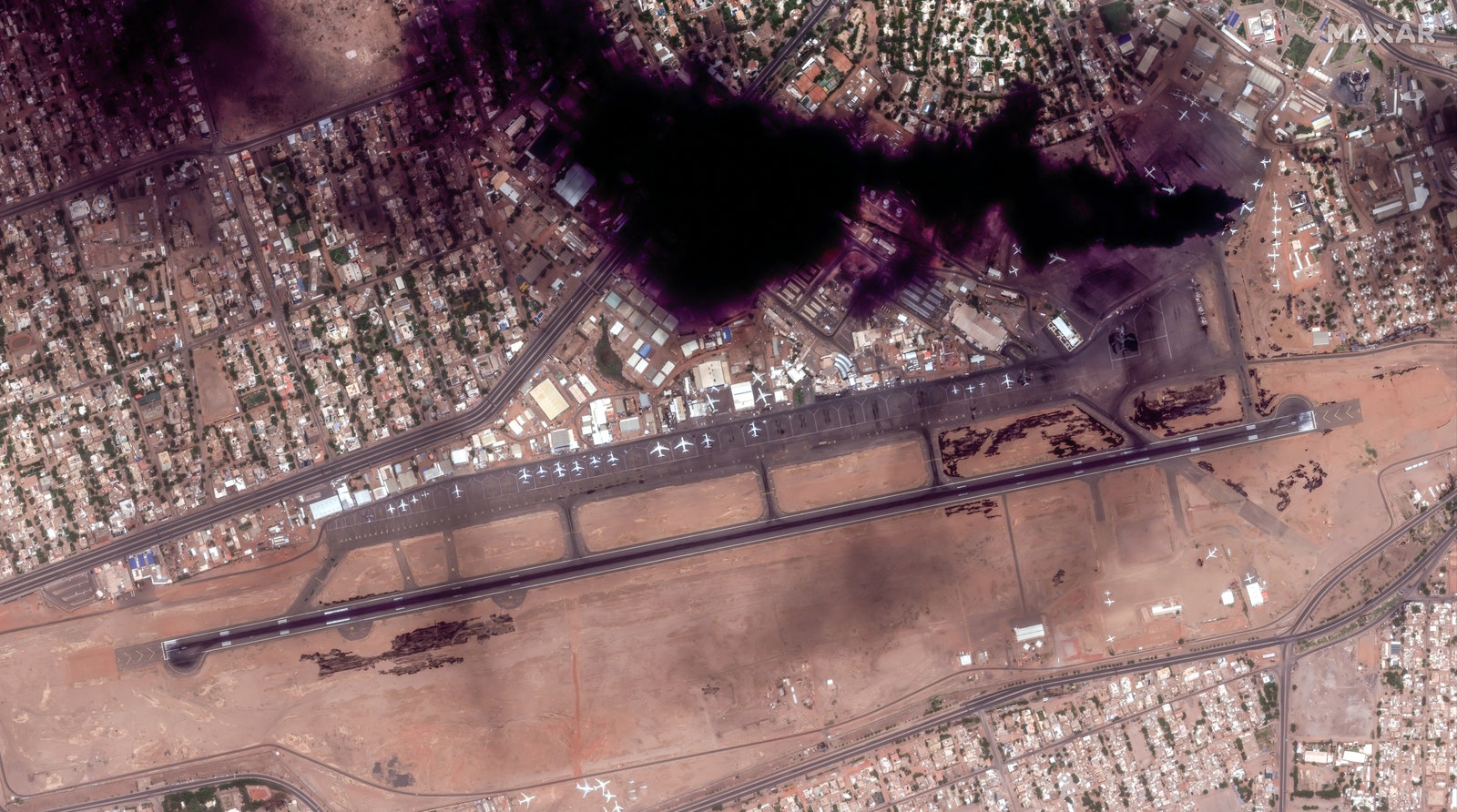On Thursday, the head of the Sudanese Army, Abdel Fattah al-Burhan, addressed the United Nations General Assembly in New York City, asking for increased aid from the international community for Sudan and condemning the paramilitary groups that he says “have killed, looted, raped, robbed, and seized citizens’ homes and properties, and destroyed infrastructure and government buildings.” Since April, the country has been gripped by a civil conflict between the government and the Rapid Support Forces (RSF), a rebel group backed by the Russian mercenary company, the Wagner Group. At the beginning of the week, ahead of the General Assembly, a group of 50 human rights and humanitarian organizations published an open letter urgently calling for the UN Security Council to address the crisis in Sudan.
A new report from the Conflict Observatory at Yale University has used satellite imagery and open source investigative tools to chart the catastrophic damage caused by fighting in the capital city of Khartoum. Open source imagery has been particularly hard to come by in Sudan, due in part to power and telecom blackouts, which makes it hard to assess the full extent of the damage caused by the conflict.
The Conflict Observatory, a US-government-backed initiative between Yale University’s Humanitarian Research Lab, the Smithsonian Cultural Rescue Initiative, PlanetScape AI, and the mapping software Esri, has identified at least five explosions that took place within the city, including attacks that damaged a market and a hospital and which researchers estimate have left hundreds of people dead. At least one of the explosions—the attack on the market—was most likely caused by a drone strike.
Photograph: Maxar Technologies
Government forces have acquired Turkish Bayraktar drones, while the RSF has been using commercial unmanned aerial vehicles (UAVs) likely sourced from Russia, according to Nathaniel Raymond, a coleader of the Humanitarian Research Lab and lecturer at Yale’s Jackson School of Global Affairs.
“Welcome to the new world order,” says Raymond. “All conflicts are now shaped by the use of UAVs by state and nonstate actors.”
Most of the aerial strike damage that the Conflict Observatory found appears to have been attributed to the Sudanese Armed Forces (SAF), though both sides have released statements accusing the other of attacks on various locations. The RSF, headed by Mohamed Hamdan Daglo, known as Hemedit, has also been receiving weapons, including drones, from Wagner for months. The mercenary group has forces stationed across the border in eastern Libya. Though technically a private company, Wagner has been an integral part of Russia’s assertion of military and foreign power overseas, particularly in Africa. A recent convoy carrying Russian weapons to the RSF crossed into Sudan via Chad on September 6.
Violence has been steadily worsening in Sudan since April, when negotiations meant to return the government to civilian rule broke down. Al-Burhan has been the country’s de facto ruler since a coup in 2021, following the ouster of the country’s president Omar al-Bashir in 2019. A key tension point was around whether and how quickly the RSF’s 100,000-person force would be absorbed into the Sudanese military. On April 15, the RSF launched an assault on Khartoum. Fighting escalated in Khartoum on September 16, with images of the city’s Greater Nile Petroleum Oil Company Tower skyscraper engulfed in flames circulating widely on X (formerly known as Twitter). But Raymond says that the attacks also seem to have hit two Ministry of Justice buildings, including the headquarters of the Internal Security Services.
Services Marketplace – Listings, Bookings & Reviews

